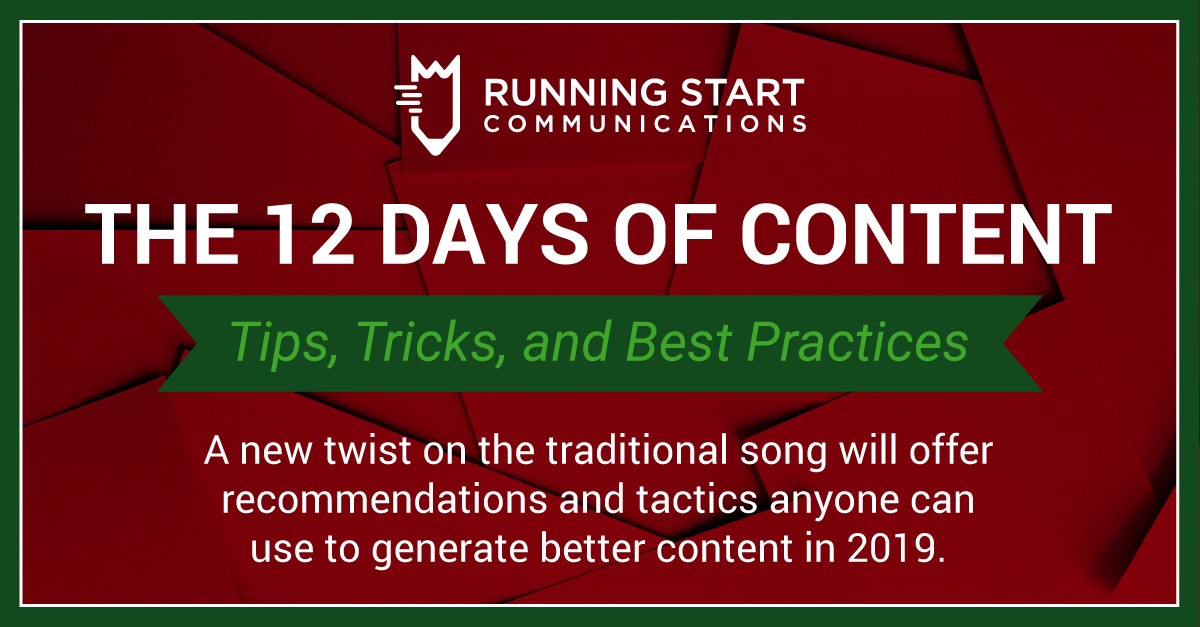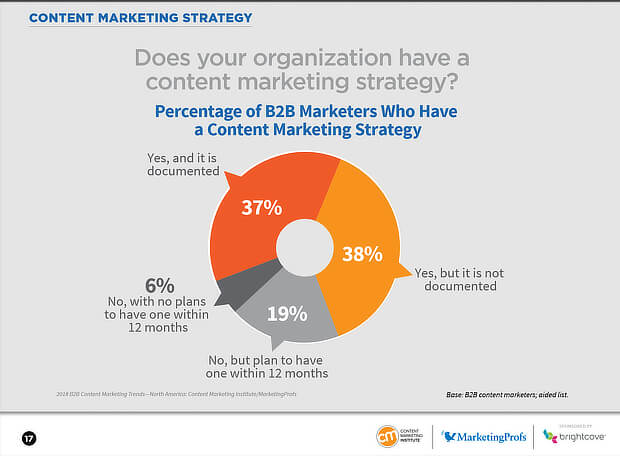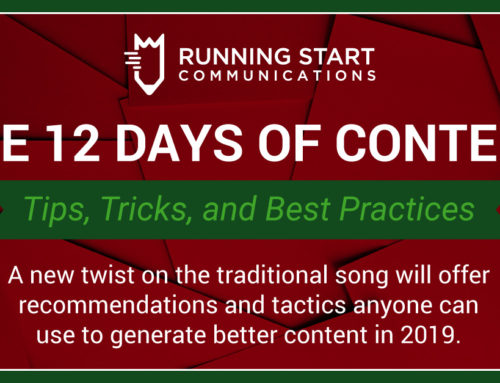
On the second day of “Content,” a random writer gave to me …
♫ On the first day of Content (Tips, Tricks, and Best Practices), a random writer gave to me … one key point for creating content.♫ ♫ On the second day of Content, a random writer gave to me … two best practices for developing an effective content marketing strategy. ♫
Thanks for taking the time to check out my second content marketing article. (Only ten more to go.) Yesterday’s blog talked about the importance of a single, overarching message in any marketing piece. Today, we’re taking a step back to talk about what every company needs before they ever start creating content – a true content marketing strategy. Those two tips are below, but first, let’s talk about why a content marketing strategy is so important and why many teams don’t currently have one.
Lay the right foundation
A brand new research report from The Content Marketing Institute and MarketingProfs found that only 37% of companies have a documented content marketing strategy in place.

Content marketing strategy is critical to success, but only 37% of companies are doing it today.
Unfortunately, this stat points to a gap between what companies have in place and what employees think they need to be successful. This same research showed that 72% of B2B content marketers believe that a strategy is the biggest factor contributing to their success. It was actually #2 on their wish list; only “high-quality content creation and efficient processes” ranked higher.
Not my job … wait, is it?
But let’s get back to the 37 percent number. I have to admit it surprised me, but not for the reason you might expect. I honestly thought it would be much lower. Why? For the simple reason that most marketing teams don’t have the time or resources to develop a comprehensive content strategy. They’re under constant pressure – and scrutiny – to create and manage marketing programs and events that they hope will generate leads. It’s understandable that it is hard for them to stop what they’re doing to think about what content exists, what competitors are offering, what needs to be created, and what would be most effective for a prospect in a particular phase of the sales funnel. Many companies are hiring content marketing professionals capable of devising and implementing such comprehensive strategies, but many more just aren’t there yet. This means this important job is left to whoever is willing to step up and do it. Imagine a reverse Venn diagram (if there were such a thing) where the circles representing product marketing, corporate marketing, marketing programs, and lead generation teams never overlap, and content marketing strategy falls to the floor.
Two best practices to create an effective content marketing strategy
We understand the issues and want to help, especially if your company has never created a content strategy before. Here are two tips you can follow to get started – and pave the way for better content going forward:
- Put yourself in yourself in your prospect’s shoes. What content will be most useful to help them learn what they need about your products and services? What types of marketing pieces will they respond to (white papers, calculators, videos, etc.)? What do they need to make an informed buying decision? All of this helps you think about the ideal mix of content you should offer.
- Conduct an audit. Leave no stone unturned in your quest to find valuable content that already exists in your company, or in its absence, identify pieces you could be created in both the short- and long-term. The most effective content marketing campaigns re-use content up to five times (a topic we cover in an upcoming blog), so you may have more than you think, and a little creative energy may be able to quickly generate a lot of great content.
Armed with this information – what prospects want, and what you can offer them – your team can invest a little time to map out a long-term strategy. Don’t worry about perfection; it’s most important to actually produce a first draft that can be fined tuned as you go. But you should include your specific goals, outline when and how each piece will be delivered, and how you’ll measure success. Note: I’d like to acknowledge that developing a content marketing strategy is more involved than these two recommendations. We’ll cover it in a future article, but wanted to stress how important this is in one of the first articles in this series. Stay tuned for tomorrow’s article for three tactics anyone can use to write content that engages any type of reader.


Leave A Comment